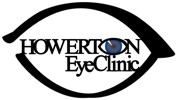
Did you know that diabetes is one of the leading causes of blindness?
In the United States, diabetes is the most common cause of vision loss in people younger than 65 years old. Patients with diabetes increase their risk of eye disease so it is important to take preventative measures to prevent vision loss or blindness.
What is Diabetic Eye Disease?
In an earlier blog post by Howerton Eye Clinic “Diabetic eye disease refers to a number of eye problems that can affect people with diabetes, including cataracts, glaucoma, and diabetic retinopathy, all of which can threaten vision and negatively affect daily life. All people with type 1 or type 2 diabetes can develop a form of diabetic eye disease, and due to the lack of symptoms early on, many people with diabetes are unaware that they are in the early stages of eye disease.” The blog continues to state “Diabetic retinopathy is the most common diabetic eye disease. It is the leading cause of vision loss and blindness in adults 20 to 74 years of age, and the National Eye Institute (NEI) estimates that nearly 7.7 million people age 40 or older are afflicted with this condition. The risk of developing diabetic eye disease increases the longer a person has diabetes. This is concerning, especially given that the number of people with diabetes is expected to grow steadily, particularly among African Americans, American Indians, Alaska Natives, Hispanics/Latinos, and older adults (who tend to have a greater chance of developing the condition).”
Are there treatments for Diabetic Retinopathy?
There is no cure for diabetic retinopathy, however with early detection and preventive measure it is possible to reduce severe vision loss from diabetes by 95% accounting to the National Eye Institute.
To learn more about preventative measures, early detection and treatment options, visit Howerton Eye Clinic website. Howerton Eye Clinic has an office at the Southwest Medical Village!
The Southwest Medical Village is an innovation of the traditional medical office building located in Southwest Austin. With a large central family medicine practice surrounded by selected specialists that agree to offer one-of-a-kind patient access and share improved processes outcomes and data for quality patient care. The vision for the village includes the ability for select primary and specialty care elements to coalesce in such a way as to be an Accountable Care Community of Practice, with an eye toward the prevailing legislation and reform policy on accountable care.
Patients are able to take care of their healthcare needs with access to over 20 medical practices including a pharmacy, lab and imaging center under one roof.
